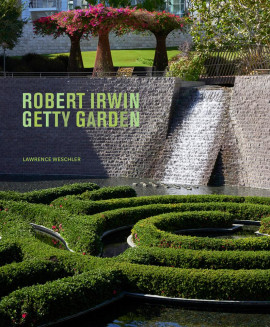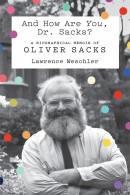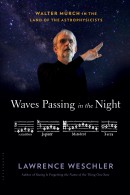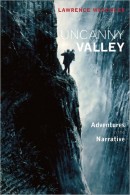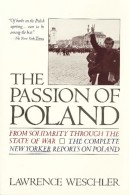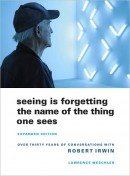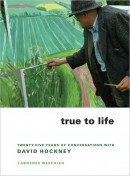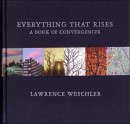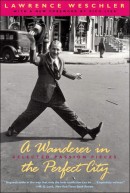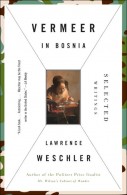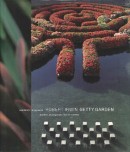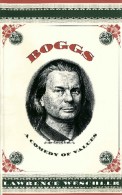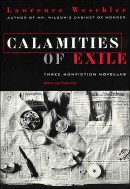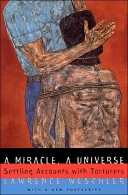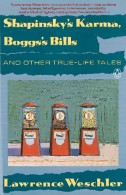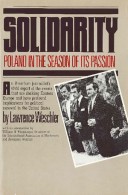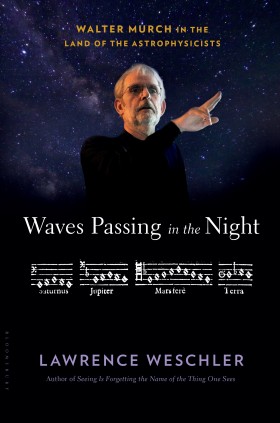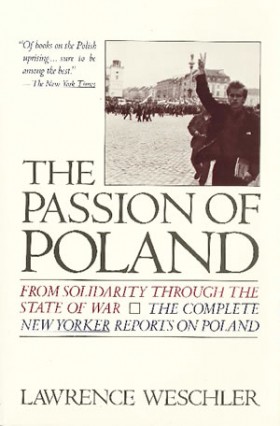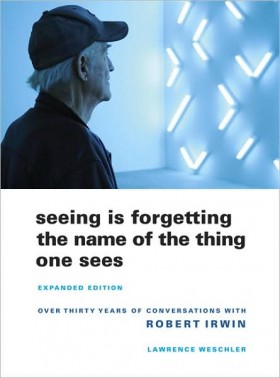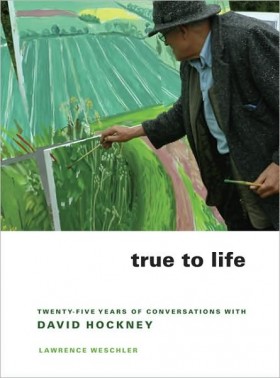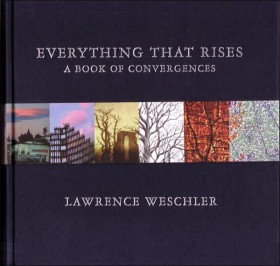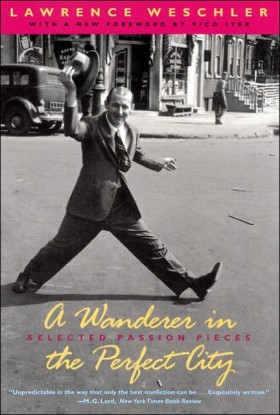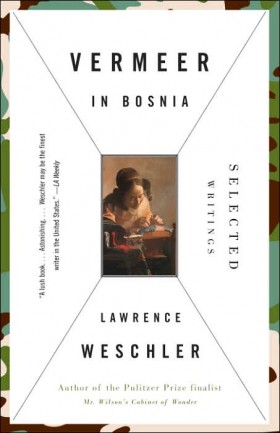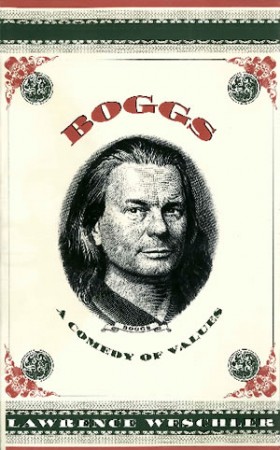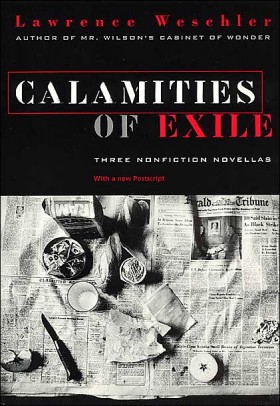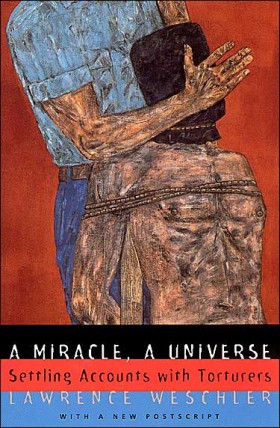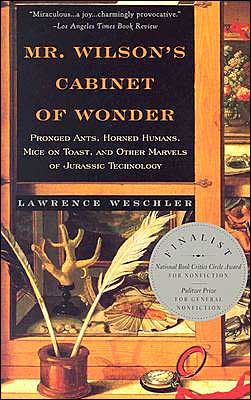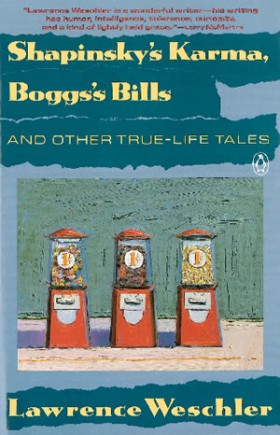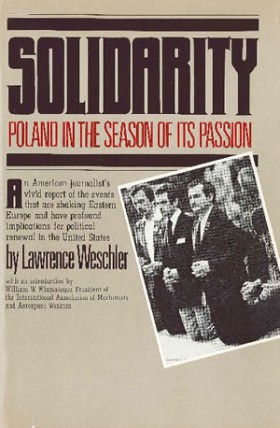Robert Irwin Getty Garden
Among the most beloved sites at the Getty Center, the Central Garden has aroused intense interest from the moment artist Robert Irwin was awarded the commission. First published in 2002, Robert Irwin Getty Garden is comprised of a series of discussions between noted author Lawrence Weschler and Irwin, providing a lively account of what Irwin has playfully termed “a sculpture in the form of a garden aspiring to be art.” The text revolves around four garden walks: extended conversations in which the artist explains the critical choices he made—from plant materials to steel—in the creation of a living work of art that has helped to redefine what a modern garden can and should be. This updated edition features new photography of the Central Garden in a smaller, more accessible format.
And How Are You, Dr Sacks?
Lawrence Weschler began spending time with Oliver Sacks in the early 1980s, when he set out to profile the neurologist for his own new employer, The New Yorker. Almost a decade earlier, Dr. Sacks had published his masterpiece Awakenings—the account of his long-dormant patients’ miraculous but troubling return to life in a Bronx hospital ward. But the book had hardly been an immediate success, and the rumpled clinician was still largely unknown. Over the ensuing four years, the two men worked closely together until, for wracking personal reasons, Sacks asked Weschler to abandon the profile, a request to which Weschler acceded. The two remained close friends, however, across the next thirty years and then, just as Sacks was dying, he urged Weschler to take up the project once again. This book is the result of that entreaty.
Waves Passing in the Night
Walter Murch in the Land of the Astrophysicists
For film aficionados, Walter Murch is legendary—a three-time Academy Award winner, arguably the most admired sound and film editor in the world for his work on Apocalypse Now, The Godfather trilogy, The English Patient, and many others. Outside of the studio, his mind is wide-ranging; his passion, pursued for several decades, has been astrophysics, in particular the rehabilitation of Titius-Bode, a long-discredited 18th century theory regarding the patterns by which planets and moons array themselves in gravitational systems across the universe. Though as a consummate outsider he's had a hard time attracting any sort of comprehensive hearing from professional astrophysicists, Murch has made advances that even some of them find intriguing, including a connection between Titius Bode and earlier notions—going back past Kepler and Pythagorus—of musical harmony in the heavens. Unfazed by rejection, ever probing, Murch perseveres in the highest traditions of outsider science. Lawrence Weschler brings Murch's quest alive in all its seemingly quixotic, yet still plausible, splendor, probing the basis for how we know what we know, and who gets to say. “The wholesale rejection of alternative theories has repeatedly held back the progress of vital science,” Weschler observes, citing early twentieth-century German amateur Alfred Wegener, whose speculations about continental drift were ridiculed at first, only to be accepted as fact decades later. Theoretical physicist Lee Smolin says “It is controversy that brings science alive”—and Murch's quest does that in spades. His fascination with the way the planets and their moons are arranged opens up the field of celestial mechanics for general readers, sparking an awareness of the vast and (to us) invisible forces constantly at play in the universe.Domestic Scenes
The Art of Ramiro Gomez
Award-winning author Lawrence Weschler’s book on the young Mexican American artist Ramiro Gomez explores questions of social equity and the chasms between cultures and classes in America.
Gomez, born in 1986 in San Bernardino, California, to undocumented Mexican immigrant parents, bridges the divide between the affluent wealthy and their usually invisible domestic help—the nannies, gardeners, housecleaners, and others who make their lifestyles possible—by inserting images of these workers into sly pastiches of iconic David Hockney paintings, subtly doctoring glossy magazine ads, and subversively slotting life-size painted cardboard cutouts into real-life situations.
Domestic Scenes engages with Gomez and his work, offering an inspiring vision of the purposes and possibilities of art.
Uncanny Valley
Adventures in the Narrative
Shuttling between cultural comedies and political tragedies, Lawrence Weschler’s articles have throughout his long career intrigued readers with his unique insight into everything he examines, from the ordinary to the extraordinary.
Uncanny Valley continues the page-turning conversation as Weschler collects the best of his narrative nonfiction from the past fifteen years. The title piece surveys the hapless efforts of digital animators to fashion a credible human face, the endlessly elusive gold standard of the profession. Other highlights include profiles of novelist Mark Salzman, as he wrestles with a hilariously harrowing bout of writer’s block; the legendary film and sound editor Walter Murch, as he is forced to revisit his work on Apocalypse Now in the context of the more recent Iraqi war film Jarhead; and the artist Vincent Desiderio, as he labors over an epic canvas portraying no less than a dozen sleeping figures.
With his signature style and endless ability to wonder, Weschler proves yet again that the “world is strange, beautiful, and connected” (The Globe and Mail). Uncanny Valley demonstrates his matchless ability to analyze the marvels he finds in places and people and offers us a new, sublime way of seeing the world.
Seeing Is Forgetting the Name of the Thing One Sees
Expanded Edition
When this book first appeared in 1982, it introduced readers to Robert Irwin, the Los Angeles artist "who one day got hooked on his own curiosity and decided to live it." Now expanded to include six additional chapters and twenty-four pages of color plates, Seeing Is Forgetting the Name of the Thing One Sees chronicles three decades of conversation between Lawrence Weschler and light and space master Irwin. It surveys many of Irwin's site-conditioned projects—in particular the Central Gardens at the Getty Museum (the subject of an epic battle with the site's principal architect, Richard Meier) and the design that transformed an abandoned Hudson Valley factory into Dia's new Beacon campus—enhancing what many had already considered the best book ever on an artist.
True to Life
Twenty-Five Years of Conversations with David Hockney
Soon after the book's publication in 1982, artist David Hockney read Lawrence Weschler's Seeing Is Forgetting the Name of the Thing One Sees: A Life of Contemporary Artist Robert Irwin and invited Weschler to his studio to discuss it, initiating a series of engrossing dialogues, gathered here for the first time. Weschler chronicles Hockney's protean production and speculations, including his scenic designs for opera, his homemade xerographic prints, his exploration of physics in relation to Chinese landscape painting, his investigations into optical devices, his taking up of watercolor—and then his spectacular return to oil painting, around 2005, with a series of landscapes of the East Yorkshire countryside of his youth. These conversations provide an astonishing record of what has been Hockney's grand endeavor, nothing less than an exploration of "the structure of seeing" itself.
Everything That Rises
A Book of Convergences
From a cuneiform tablet to a Chicago prison, from the depths of the cosmos to the text on our T-shirts, Lawrence Weschler finds strange connections wherever he looks. The farther (and further) one travels (through geography, through art, through science, through time), the more everything seems to converge — at least, it does through Weschler's giddy, brilliant eyes. Weschler combines his keen insights into art (both contemporary and Renaissance), his years of experience as a chronicler of the fall of Communism, and his triumphs and failures as the father of a teenage girl into a series of articles — complemented by color photos and illustrations throughout — that are sure to illuminuate, educate, and astound.
Wanderer in the Perfect City
Selected Passion Pieces
There is something both marvelous and hilarious,” writes Lawrence Weschler, “in watching the humdrum suddenly take flight. This is, in part, a collection of such launchings.”Indeed, the eight essays collected in A Wanderer in the Perfect City do soar into the realm of passion as Weschler profiles people who “were just moseying down the street one day, minding their own business, when suddenly and almost spontaneously, they caught fire, they became obsessed, they became intensely focused and intensely alive.” With keen observations and graceful prose, Weschler carries us along as a teacher of rudimentary English from India decides that his destiny is to promote the paintings of an obscure American abstract expressionist; a gifted poker player invents a more exciting version of chess; an avant-garde Russian émigré conductor speaks Latin, exclusively, to his infant daughter; and Art Spiegelman composes Maus. But simple summaries can’t do these stories justice: like music, they derive their character from digressions and details, cadence and tone. And like the upwelling of passion Weschler’s characters feel, they are better experienced than explained. “Weschler seems so hungry for life that the rest of us become hungry for him . . . a magician, a performer, and a scholar. All in one.”—from the Foreword by Pico Iyer “Weschler’s essays are exquisitely…
Vermeer in Bosnia
There are writers who specialize in the strange and others whose genius is to find the strangeness in the familiar, the unexpected meanings in stories we thought we knew. Of that second category, Lawrence Weschler is the master. Witness the pieces in this splendidly disorienting collection, spanning twenty years of his career and the full range of his concerns–which is to say, practically everything.
Only Lawrence Weschler could reveal the connections between the twentieth century’s Yugoslav wars and the equally violent Holland in which Vermeer created his luminously serene paintings. In his profile of Roman Polanski, Weschler traces the filmmaker’s symbolic negotiations with his nightmarish childhood during the Holocaust. Here, too, are meditations on artists Ed Kienholz and David Hockney, on the author’s grandfather and daughter, and on the light and earthquakes of his native Los Angeles. Haunting, elegant, and intoxicating, Vermeer in Bosnia awakens awe and wonder at the world around us.
Robert Irwin Getty Garden
In the early 1990s the design and creation of the Central Garden at the Getty Center were entrusted to the distinguished contemporary visual artist Robert Irwin. Irwin-a member of California's "light and space" movement-was an unexpected choice for this major commission, and his work has aroused intense interest in the art world and among gardening enthusiasts and visitors to the Getty Center. In Robert Irwin Getty Garden, Lawrence Weschler offers a lively account of the creation of what Irwin has playfully termed "a sculpture in the form of a garden aspiring to be art." Weschler's narrative is followed by a transcript of conversations in which he and Irwin, in a series of walks through the garden, discuss in detail the decisions, both philosophical and practical, that shaped the making of this major art work in Southern California. The book contains more than one hundred color illustrations, many of them specially commissioned from photographer Becky Cohen. The photographs capture the stunning variety of colors and textures of the plant forms selected by Irwin. They also reveal the care and precision that went into the creation of each element of the garden environment, from the handrails and lighting fixtures to the huge azalea rings and waterfall that make a visit to the Getty Central Garden an unusually thought-provoking experience.
Robert Irwin has exhibited widely in galleries and museums in North America and abroad.
Boggs
A Comedy of Values
In this highly entertaining book, Lawrence Weschler chronicles the antics of J. S. G. Boggs, an artist whose consuming passion is money, or perhaps more precisely, value. Boggs draws money-paper notes in standard currencies from all over the world-and tries to spend his drawings. It is a practice that regularly lands him in trouble with treasury police around the globe and provokes fundamental questions regarding the value of art and the value of money.
Calamities of Exile
Three Nonfiction Novellas
From the author of Mr. Wilson's Cabinet of Wonder, Calamities of Exile combines three gripping narratives that afford a sort of double CAT scan into the natures of both modern totalitarianism and timeless exile.
A Miracle, A Universe
Settling Accounts with Torturers
During the past fifteen years, one of the most vexing issues facing fledgling transitional democracies around the world—from South Africa to Eastern Europe, from Cambodia to Bosnia—has been what to do about the still-toxic security apparatuses left over from the previous regime. In this now-classic and profoundly influential study, the New Yorker's Lawrence Weschler probes these dilemmas across two gripping narratives (set in Brazil and Uruguay, among the first places to face such concerns), true-life thrillers in which torture victims, faced with the paralysis of the new regime, themselves band together to settle accounts with their former tormentors.
Mr. Wilson’s Cabinet of Wonder
Pronged Ants, Horned Humans, Mice on Toast, and Other Marvels of Jurassic Technology
Pronged ants, horned humans, a landscape carved on a fruit pit—some of the displays in David Wilson's Museum of Jurassic Technology are hoaxes. But which ones? As he guides readers through an intellectual hall of mirrors, Lawrence Weschler revisits the 16th-century "wonder cabinets" that were the first museums and compels readers to examine the imaginative origins of both art and science. Illustrations.
Shapinsky’s Karma, Bogg’s Bills
And Other True-Life Tales
Bizarre twists of fate and the mysterious workings of grace link these profiles of six people who unexpectedly changed the direction of their lives. We meet Ahumal Ramachander, an intense, polyglot Indian who, on his first trip to the U.S., discovered an obscure abstract-expressionist painter named Harold Shapinsky. Ramachander decided that his true calling, his karma, was to champion Shapinsky's work. His story reveals the ruthlessness of a slick art world. Other dreamers who followed their instincts include Knud Jensen, Danish cheese exporter turned art-museum director; Art Spiegelman, creator of Maus, an award-winning comic-strip history of the Holocaust; and Nicolas Slonimsky, energetic Russian conductor who found a new vocation in his mid-60s as a musical lexicographer. We also meet eccentric artist James Boggs, who often is arrested for spending his near-perfect renditions of $100 bills, and Lenny Durso, an almost bankrupt owner of a bookstore. Weschler is a staff writer for the New Yorker, where most of these sensitive portraits first appeared.
